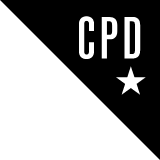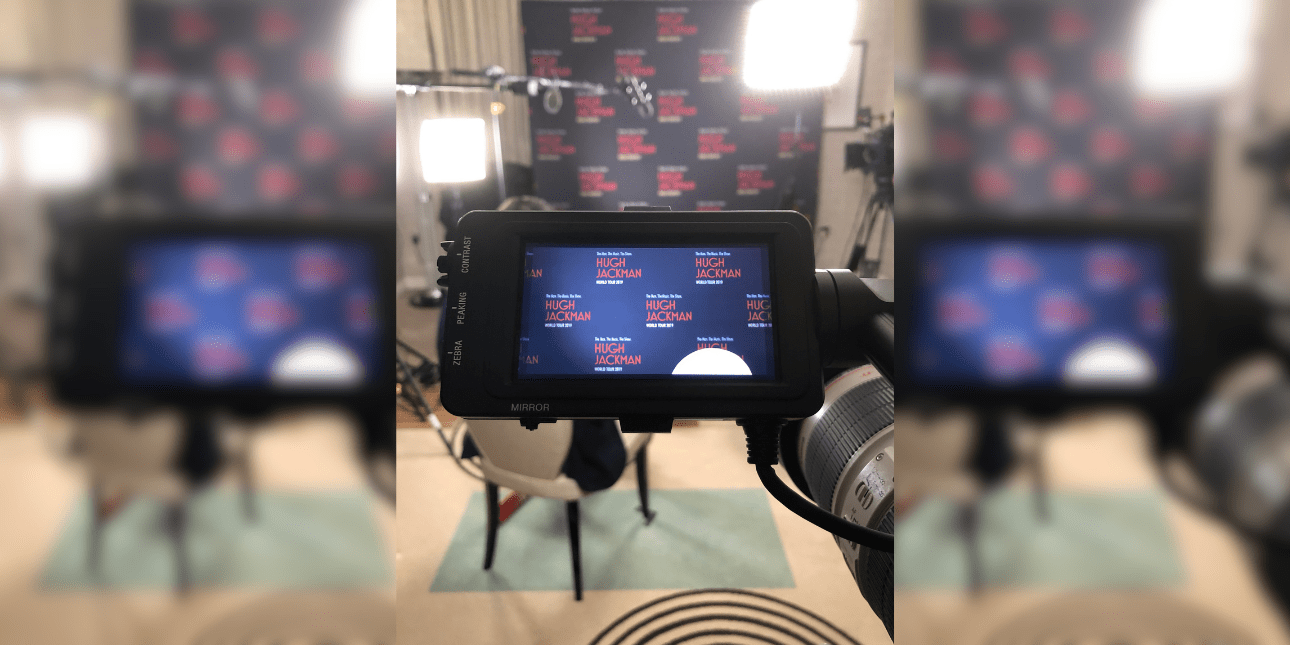Tedious, torturous and time-pressed: are the days of the press junket numbered?
Once they were an easy way to eke valuable publicity from a celeb’s busy schedule. Now in an age of digital media and increased awareness about mental health, are they still fit-for-purpose?
Over the last week Blake Lively has been garnering headlines for the “PR nightmare” (© Daily Mail) of the “car-crash” (© the Guardian) promotional tour undertaken for new film It Ends with Us. Despite the movie’s theme of domestic violence, the US actor has faced criticism for plugging her husband’s gin brand (described as “tone-deaf” on social media given the links between domestic violence and alcohol) and for breezily gabbling away about zodiac signs during interviews, rather than discussing the film’s serious issues.
An interview with Lively conducted during a 2016 press junket has also surfaced online this week, with the actor seemingly being rude and ignoring Norwegian journalist Kjersti Flaa.
While there’s no condoning Lively’s alleged rudeness, it’s clear the press junket model – which usually involves the “talent” sitting in a stuffy hotel suite facing an endless conveyor belt of journalists – exasperates many actors. The press junket has been the way movie publicity has been handled for decades with most stars viewing it as a necessary evil. But this year, there are signs many famous faces have reached breaking point with the format.
Earlier this summer, Black Panther actor Lupita Nyong’o likened press junkets to a “torture technique” where a never-ending cycle of “different people are ferried in” asking the same questions. “You have to give each one of them attention, focus and an articulate answer that you just gave to the person before. It’s irritating.”
Meanwhile, Oppenheimer star Cillian Murphy told GQ in February that the junket process is a “broken model” where “everybody is so bored”.
It appears journalists aren’t fans of the press junket either.
“The problem is the format,” says Helen O’Hara, editor-at-large at Empire magazine. “The interviews usually take place in tight time slots, meaning journalists are absolutely constrained in what they can do. Sometimes you only get three minutes to ask basic questions [meaning] you can’t jump in with obscure questions about the film… If [actors] don’t have a good answer, you have nothing to go home with…”

The environment in which many junkets take place hardly helps. “It’s difficult for actors because they’re most probably stuck in a non-air-conditioned room (air-conditioning makes too much noise) being asked the same questions 50 times in a row,” adds O’Hara. “I understand PRs wanting to maximise as much of the actor’s time while they’re in the UK. But the result can be horrendous for everybody.”
The bête noire for many film journalists is the dreaded roundtable: where journalists are broken into groups of five-ten with actors usually spending 15-30 minutes at each table (think of how bridal couples are shipped from table-to-table at wedding receptions).
“Roundtables are terrible,” says O’Hara. “If I’m on a table with a bunch of tabloid journalists who’ve been sent along to ask questions about diet or personal lives, none of that’s helpful to me. Likewise, my geeky film questions aren’t helpful to them either… Even if you’re allocated 20 minutes, you might only get five minutes of material.”
HORROR STORIES
Many journalists have their own roundtable horror stories – O’Hara remembers one Twilight junket where an international reporter “spent five minutes monologuing Taylor Lautner her views on the storyline. Nobody could get a word in.”
While face-to-face 1:1s are always preferable for most journalists, O’Hara notes these are slowly becoming replaced in recent years by interviews on Zoom/Teams. This may exacerbate what is wrong with the current model. “The actors are still going to a hotel or a PR’s office to do these interviews, but instead of speaking in-person, they’re speaking at a computer screen… Zoom makes it more impersonal for both journalists and actors.”
For film studios such as Paramount – currently on a belt-tightening drive to cut $500m (£383m) in costs – video interviews are infinitely cheaper than, as O’Hara describes it, “the days when press junkets would be expensive undertakings, happening at the Dorchester, renting seven rooms, plus a suite.”
Some actors even believe junkets – whether via Zoom or face-to-face – to be superfluous. As Murphy pointed out in his GQ interview, the success of Barbie and Oppenheimer happened during the Sag-Aftra actors’ strike - a time when the brakes were put on much promotional activity.
The jet lag-inducing, time zone-straddling dynamics of a press tour adds to the malaise: the recent Deadpool & Wolverine promotion saw Hugh Jackman and Ryan Reynolds visit London, Seoul, Rio de Janeiro and New York in little over a week. Even usually amiable Tom Hanks finds junkets gruelling, describing them in 2017 as “opprobrious” (it means ‘infamous’) and “merciless”, adding that it’s a “level of corporate branding strategy to the degree of hackery and they honestly think you have the stamina of an ox to drag this piece of shit movie across international datelines”.
Sometimes, stars’ boredom is all-too-palpable. In 2015, Cara Delevingne was panned for her subdued interview style during a junket, while other celluloid luminaries storm out of them – see Robert Downey Jr, who upped and left after Channel 4 News’ Krishnan Guru-Murthy pummelled him with questions about drugs and alcoholism six minutes into his eight-minute slot. (Quentin Tarantino didn’t take to Guru-Murthy either, informing him, after an unwanted question about movie violence, “I'm not your slave and you’re not my master… I’m shutting your butt down.”
Being relentlessly ‘on’ can take a toll on performers’ mental health too. In 2022, actor/director Jonah Hill announced he was withdrawing from press tours to “protect” himself, adding media appearances made his anxiety attacks worse. Meanwhile, O’Hara notes the mental strain for actors embarking on a mandatory press tour to promote a movie they know is a dud and facing roomfuls of journalists who also believe it to be a stinker.
Some actors, however, have special techniques to deal with the monotony of back-to-back interviews, such as Robert Pattinson who variously claimed during Twilight junkets that he didn’t wash his hair, once worked as a hand model and witnessed a clown’s death at a circus. As he admitted, “I’ve given my publicist a number of heart attacks.”
In 2018 Lady Gaga fought fire with fire when promoting A Star is Born by repeating the same line about co-star Bradley Cooper ad nauseum in every interview: “There could be 100 people in the room and 99 don’t believe in you, and you just need one to believe in you – and that was him.”
OFF THE WALL
Journalists also have fun playing with the limitations of the junket format. Knowing actors are bored and exhausted talking about the same topics, titles such as Empire often prepare “higher concept interviews” and quirky, off-the-wall questions. “With podcasts, we encourage people [actors] to go off at tangents and say what they want,” says O’Hara. “We’ve had feedback from PRs – and sometimes the stars themselves – saying that speaking in a freer format has been a tonic and recharging break… Apparently they went back into afternoon sessions fired-up and ready-to-go again.”
Film journalist-turned-filmmaker Ali Catterall (co-director of hit 2024 feature-documentary SCALA!!!) recalls: “In my junket days, I’d often slip in completely bizarre questions, if the talent were falling asleep – sometimes it worked! But I’m still mortified about the time in 2001 I turned up for a meeting with an extremely famous star, and stood beside him for 20 minutes, while we both yawned and peered at our watches, because I’d failed to recognise him. The first words I blurted out when I finally did, were: “I thought you were taller!” The resulting interview, while perfectly cordial, was slightly strained.” (Punchline: six years later, Ali walked into another junket with the same actor, who looked up and said, “Oh, it’s you!”)
It isn’t just journalists and actors who find junkets difficult: photographers and film crew do too. “[Press junkets] aren’t conducive to getting decent content,” says Andrew Sweeting, director of photography at Version Music, who has worked with everybody from Hugh Jackman to James Corden at junkets. “There are often so many people coming in-and-out: queues of journalists, cameras in the corridor. As a result, you have little time to set up and find yourself quickly having to whip your camera into position and only end up with 30 seconds [of footage].”
“Sometimes you can see the disdain on [actors’] faces,” adds Sweeting. “For me, the best way, is to get access to people on set. Even a few moments outside a trailer is more interesting (and engaging for the star) than shooting them against a big video wall.”
Given the military operations involved in organising the average press junket (PRs often have only a day to squeeze in dozens of press interviews to ensure maximum publicity), how can PRs ensure the experience is better for both the actor and journalist?
“From my point of view, the best thing is to try and do fewer, but better interviews,” says O’Hara, who suggests peppering the press schedule with specialist (or even humorous) interviews to lighten the mental load for actors.
Says Catterall, “I’m delighted anyone wants to talk to us! Okay, a lot of the time, the questions are the same, but after numerous back-to-back interviews, it helps you really refine your answers, so that’s a good thing. My SCALA!!! co-director Jane Giles and I also found the most interesting questions tend to come from younger people, who perhaps aren’t as jaded yet.”
Often, it comes down to logistics and time management. Inevitably, interviews will over-run. However, allocating journalists the full 15 minutes they’ve been promised works much better than PRs wading into an interview doing the ‘wind-it-up’ sign or uttering “no more questions – this is the last answer” three minutes before the end. Having a change-of-scene – think arranging an interview with an actor in the car ride to The Graham Norton Show or on a hotel balcony – might alleviate the tedium.
Publicists could also take a more hands-off approach during interviews. The nature of press junkets – where publicists often hover over journalists’ shoulders to ensure nothing disrespectful or embarrassing is said – can breed a culture of sycophancy which can lead to interviewers posing anodyne questions because they fear being blacklisted.
As for roundtables, pooling together journalists from the same discipline might work better than the raggle-taggle approach. “If you put film journalists together [on the same table] at least they’ll be asking relevant questions and can get more of a conversational ‘flow’ going,” says O’Hara. “Yes, it might mean sharing some material with competitors, but it’ll mean the conversation is genuine and not screeching to a halt and restarting.”
Publicity departments can also provide an easier environment for film crews to shoot in, says Sweeting. “Sometimes the lighting in hotel rooms can be terrible,” he says. “If the room was pre-lit before we walked in, it’d mean we don’t have the time constraint of having to set up our lights and feel the pressure to get it right.”
“Overall, I feel junkets are an outdated form of communication,” he adds. “If you want to engage people and get them excited about a new film that’s going out, maybe we need a different form of communication that isn’t putting somebody in a room and asking them bland and generic questions.”

Christian Koch is an award-winning journalist, editor, content strategist and brand consultant.


